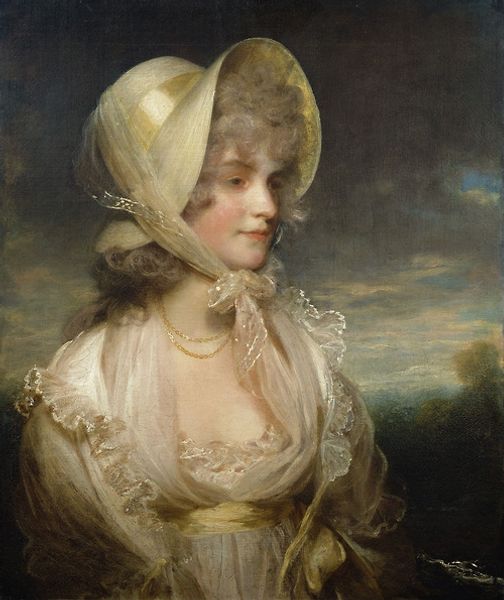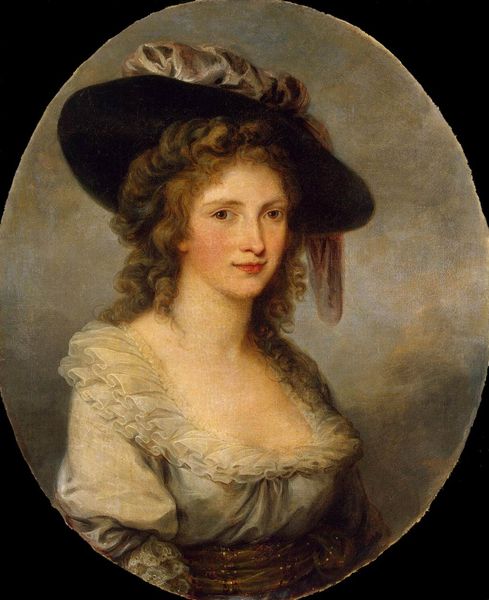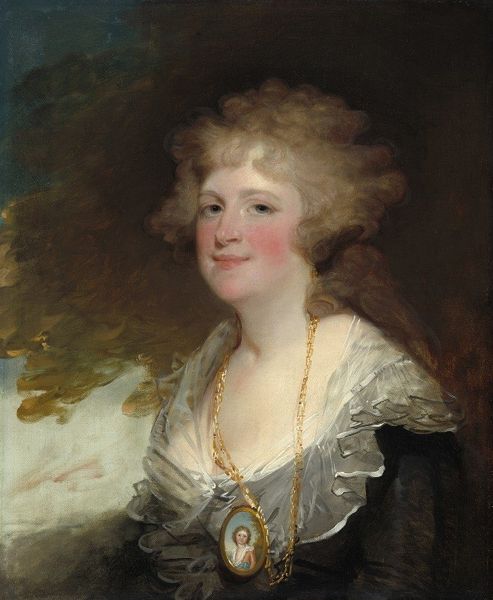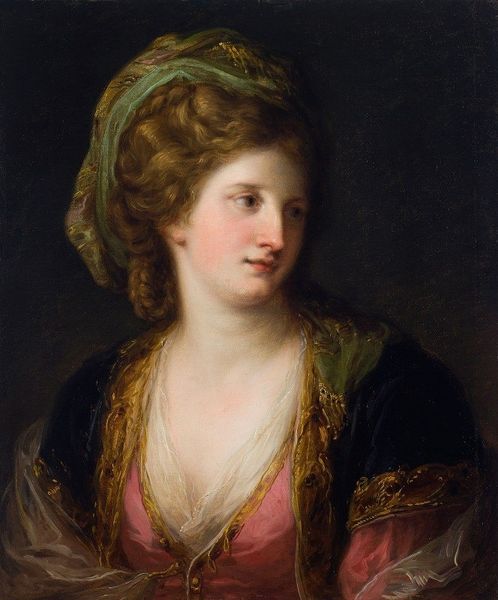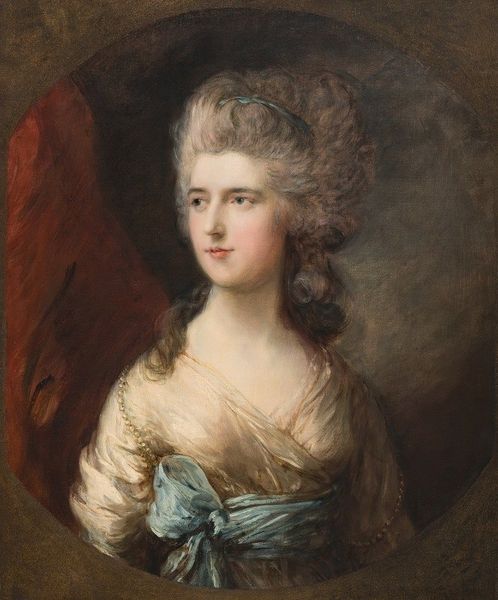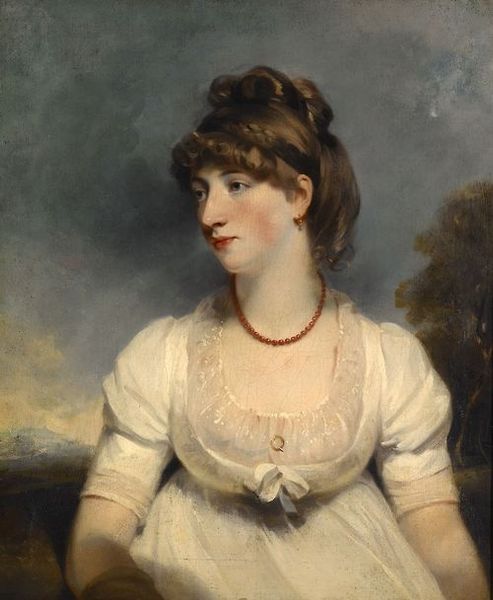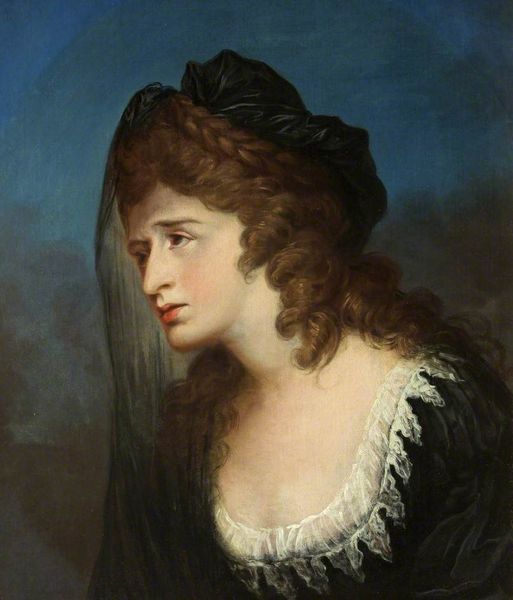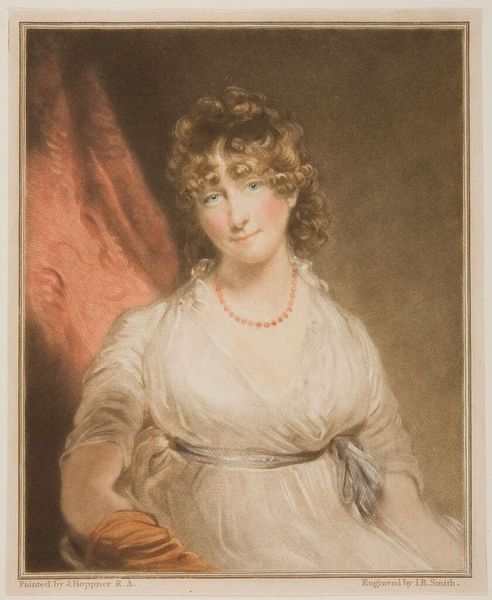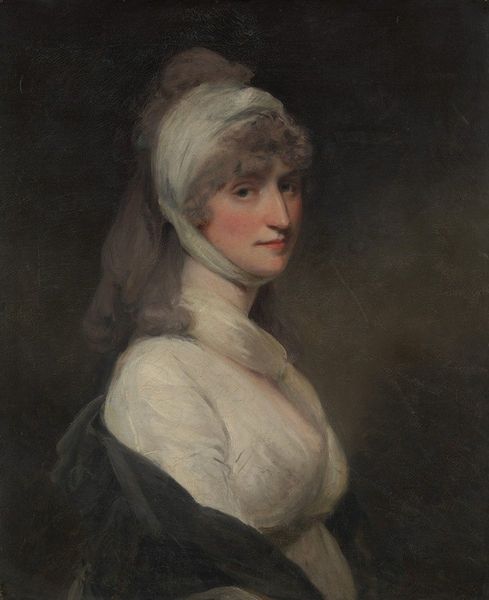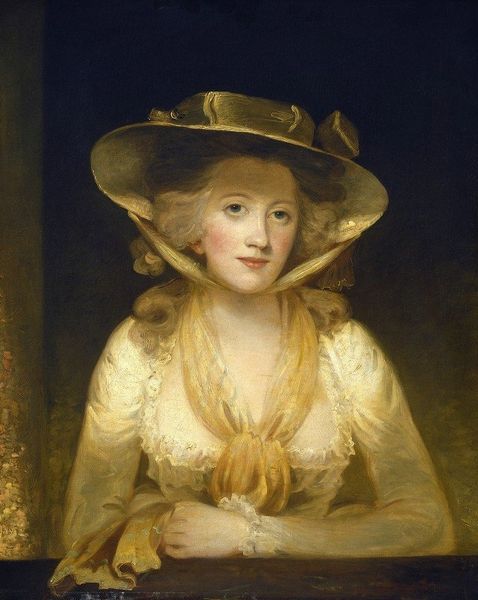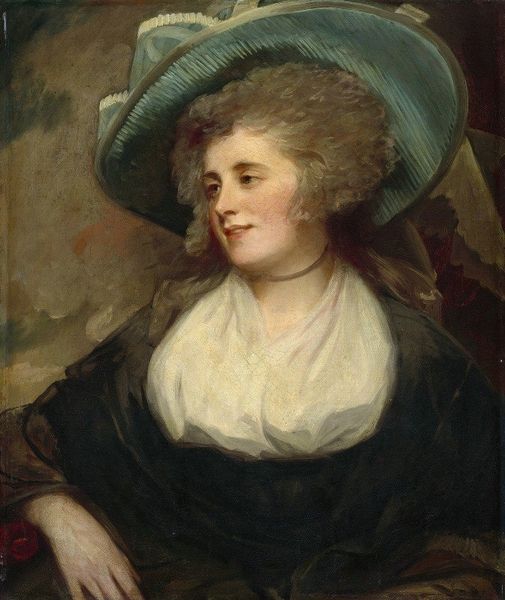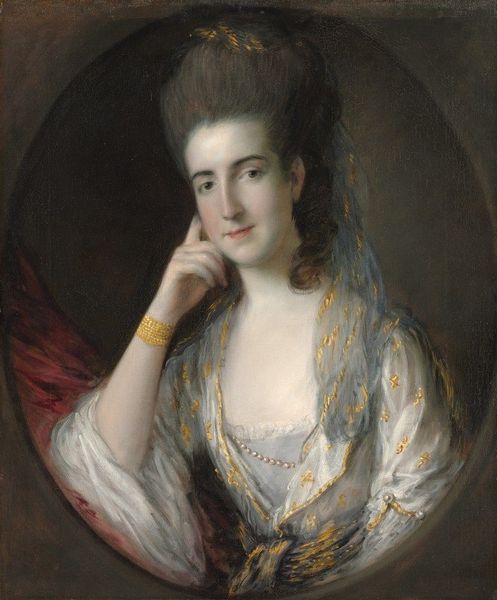
Dimensions: 74 x 62 cm
Copyright: Public domain
Editor: So, this is Joshua Reynolds' "Lady Elizabeth Foster," painted in 1787, using oil paint. She has an almost haunting look about her, don’t you think? I wonder, what do you see when you look at this piece? Curator: I see the carefully constructed image of a woman navigating a highly patriarchal society. Reynolds, a master of portraiture, understood the power dynamics at play. Consider how Lady Elizabeth's gaze meets ours directly, but is it empowering, or does it reveal an understanding of her position as a spectacle? Editor: That’s interesting. I hadn't considered the power dynamics. It seemed a simple portrait, but you are right, she seems keenly aware she’s being observed. Is Reynolds making a comment on this? Curator: Absolutely. Reynolds, consciously or unconsciously, is participating in a system where women’s value was tied to their appearance and social standing. The elaborate ruff and hairstyle, the soft light emphasizing her complexion – these are all carefully crafted details designed to convey status and desirability, but what does it cost the subject to embody those ideals? What might it have meant to perform that type of feminity, at that specific point in history? Editor: So you’re saying it’s more than just a portrait of a beautiful woman; it's a commentary on the societal constraints placed on her? Curator: Precisely. Consider how Romanticism often idealized the feminine while simultaneously reinforcing limiting stereotypes. How might we understand Lady Elizabeth's life, her potential struggles, through this lens? We are forced to examine art not as separate from historical narrative but intimately woven in with the lived experience of real subjects. Editor: That really shifts my perspective on the whole painting. Thank you! It’s much more complex than I initially thought. Curator: And that’s exactly the point! Engaging with art critically encourages us to unpack these layers of meaning and to challenge dominant narratives.
Comments
No comments
Be the first to comment and join the conversation on the ultimate creative platform.
